Whether you’re trying to conceive, or simply want to understand your own body, it can be helpful to know when you’re ovulating. We take a closer look at how long ovulation lasts and some of the symptoms you might experience.
-
Tracking cycle
-
Getting pregnant
-
Pregnancy
-
Help Center
-
Flo for Partners
-
Anonymous Mode
-
Flo app reviews
-
Flo Premium New
-
Secret Chats New
-
Symptom Checker New
-
Your cycle
-
Health 360°
-
Getting pregnant
-
Pregnancy
-
Being a mom
-
LGBTQ+
-
Quizzes
-
Ovulation calculator
-
hCG calculator
-
Pregnancy test calculator
-
Menstrual cycle calculator
-
Period calculator
-
Implantation calculator
-
Pregnancy weeks to months calculator
-
Pregnancy due date calculator
-
IVF and FET due date calculator
-
Due date calculator by ultrasound
-
Medical Affairs
-
Science & Research
-
Pass It On Project New
-
Privacy Portal
-
Press Center
-
Flo Accuracy
-
Careers
-
Contact Us
How long does ovulation last?
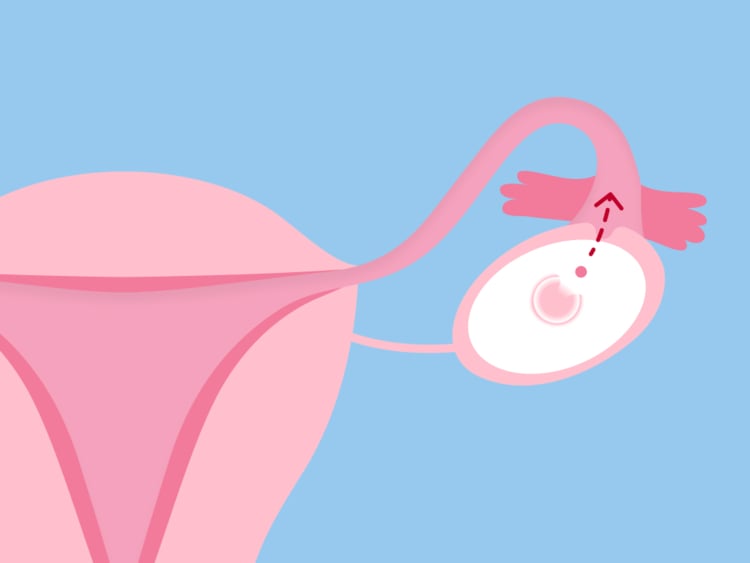

Every piece of content at Flo Health adheres to the highest editorial standards for language, style, and medical accuracy. To learn what we do to deliver the best health and lifestyle insights to you, check out our content review principles.
Ovulation is just a small moment in time, but it can mean big things for you and your body. Whether you’re fertility tracking and looking to conceive or simply want to know more about your cycle, understanding how long ovulation lasts and when it falls can be invaluable.
Are you keen to get informed on all things ovulation? Here, Dr. Amanda Kallen, a reproductive endocrinologist and associate professor of obstetrics, gynecology, and reproductive endocrinology at Yale University School of Medicine, US, talks us through a typical ovulation time frame.
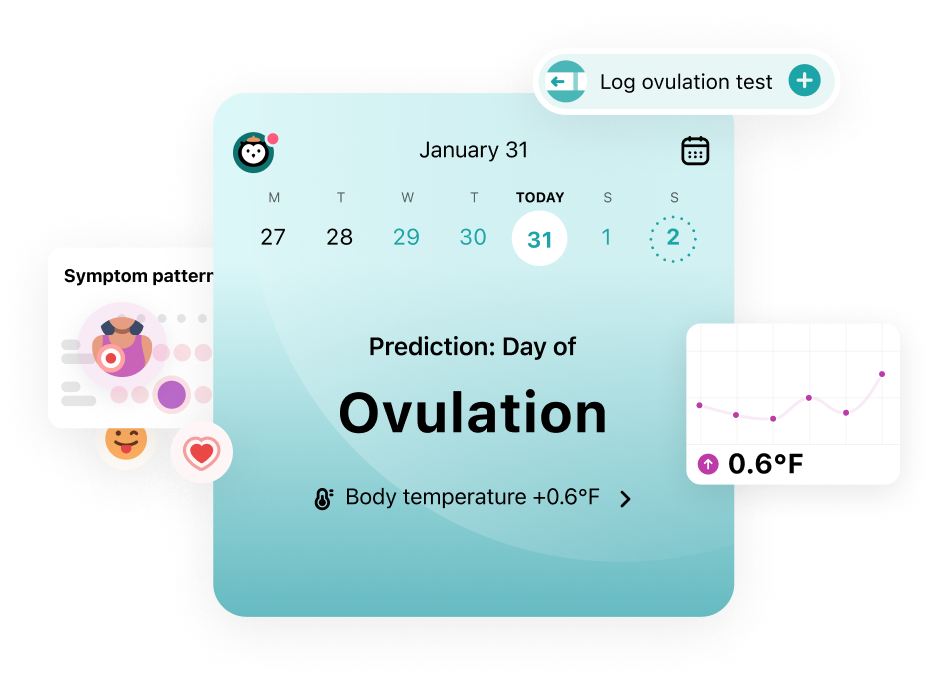
 Over
7.8M
ratings averaging
4.8/5
*
Over
7.8M
ratings averaging
4.8/5
*
Understand your fertility better with the Flo app
- Learn more about your fertility signals
- Improve ovulation predictions by tracking temperature via Apple Watch
- Log your ovulation test results
 Over
7.8M
ratings averaging
4.8/5
*
Over
7.8M
ratings averaging
4.8/5
*
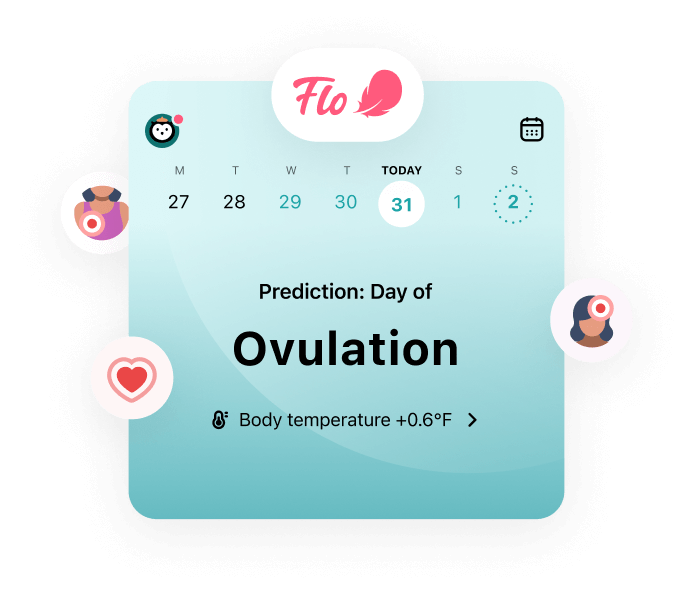
Trying to conceive?
The Flo app can help you better understand your fertility

 Over
7.8M
ratings averaging
4.8/5
*
Over
7.8M
ratings averaging
4.8/5
*
Understand your fertility better with the Flo app
- Learn more about your fertility signals
- Improve ovulation predictions by tracking temperature via Apple Watch
- Log your ovulation test results
What is ovulation?
First up: What is ovulation? In a nutshell, it’s the part of your menstrual cycle when one of your ovaries releases an egg. Once it’s released, the egg moves down into one of your fallopian tubes, where it can survive for about 24 hours. This can result in pregnancy if the egg gets fertilized by sperm during that time. And if it doesn’t? The egg will break down within 24 hours, and eventually this, along with the lining of your uterus (known as the endometrium), will shed when you have your period.
How long does ovulation last?
Dr. Kallen says that “the whole process takes about 36 hours.” The moment you actually ovulate is instant, but the mechanisms that start ovulation are in full swing before that happens. That brings us onto …
Take a quiz
Find out what you can do with our Health Assistant
When does ovulation occur in the menstrual cycle?
Good question! “Ovulation typically happens about 14 days before your period — so that means on about day 14 of your menstrual cycle if you have a 28-day cycle,” explains Dr. Kallen.
But, of course, things aren’t always that straightforward. Ovulation isn’t a one-size-fits-all scenario because not everyone has a 28-day cycle — anything ranging from 21 to 35 days is considered normal. In fact, a 2020 study using the Flo period tracker conducted by researchers at the University of Adelaide, Australia, found that only 16% of women have a 28-day cycle. So if yours is longer or shorter than this, you’re not the only one.
“The specific day of ovulation can vary based on your cycle length,” adds Dr. Kallen. “Ovulation timing can also be affected by hormonal issues such as thyroid disorders or polycystic ovary syndrome or medications such as ovulation induction medications or hormonal contraception, as well as stress and your weight.” All of these factors can make it tricky to know exactly when ovulation will strike, but you can read more on some of the physical signs and how you can tell for certain below.
Find out how to improve your chances of getting pregnant if your periods are irregular
When does ovulation start?
It all starts when you get a surge in luteinizing hormone (LH). This hormone is always in your body, but it spikes around the middle of your menstrual cycle, stimulating the release of an egg. “Ovulation happens about 36 hours after the start of the LH surge. It takes a while for LH levels to peak, and ovulation happens about 12 hours after the LH peak,” explains Dr. Kallen. Want to be able to guess more accurately when ovulation will happen? You can use ovulation tests (more on those later) for several days in the middle of your cycle to help you determine when your LH surge is happening.
What are the signs of ovulation?
Are you looking to figure out your own ovulation time frame? Then we’ve got good news: your body might just give you a few telltale signs that you’re ovulating. Of course, everyone’s different and you might experience all, some, or none of these signs, or they might vary from cycle to cycle; so don’t worry if your experience is slightly different.
Ovulation discharge
You might notice that you’re getting more discharge than usual in your underwear around ovulation time, which has a thin and slippery consistency — think raw egg whites. And how long does ovulation discharge last? Experts reckon that the duration is around four days, from just before ovulation to the moment itself.
Ovulation bloating
Do you feel more bloated than normal around ovulation? You can probably thank your hormones for that. “Bloating might happen because of a surge in estrogen just before ovulation, along with the LH surge. This may result in water retention and swelling, which can lead to bloating,” Dr. Kallen says.
If bloating is making you feel uncomfortable, we hear you. Ovulation bloating can last anywhere between a few hours and a few days, but in the meantime, you can try tackling it by eating smaller, more frequent meals and staying hydrated by drinking plenty of water.
Ovulation nausea
You might also find yourself feeling nauseous around the time of ovulation; again, this is likely due to a change in hormone levels. And how can you combat these feelings of sickness? Try to head outdoors for fresh air — even if it’s the last thing you want to do, you’re likely to feel better, we promise! And make ginger or peppermint tea your go-to drink.
Ovulation body temperature
You might also experience a slight rise in your basal body temperature (the temperature of your body when you’re resting) around the time of ovulation. The rise is only around half a degree Fahrenheit (0.3 Centigrade), but you might be able to detect the change on a thermometer if you track your temperature consistently throughout your cycle. If you see the rise for three days or more, then it’s likely that you’ve ovulated.
Ovulation pain, cramping, bleeding, and spotting
Did you know that you can also experience ovulation pain? It’s called mittelschmerz — that’s German for “middle pain” or “pain in the middle of the month”. The pain can be a dull cramp or a sharp or sudden twinge in your abdomen — usually on one side, depending on which ovary is saying “see ya” to an egg.
This ovulation symptom can last between a few minutes and a few days, and it might also be accompanied by ovulation bleeding or spotting. If you experience bleeding or spotting during the middle of your cycle, don’t panic; it’s not necessarily a cause for concern. Ovulation bleeding typically lasts around a day or two.
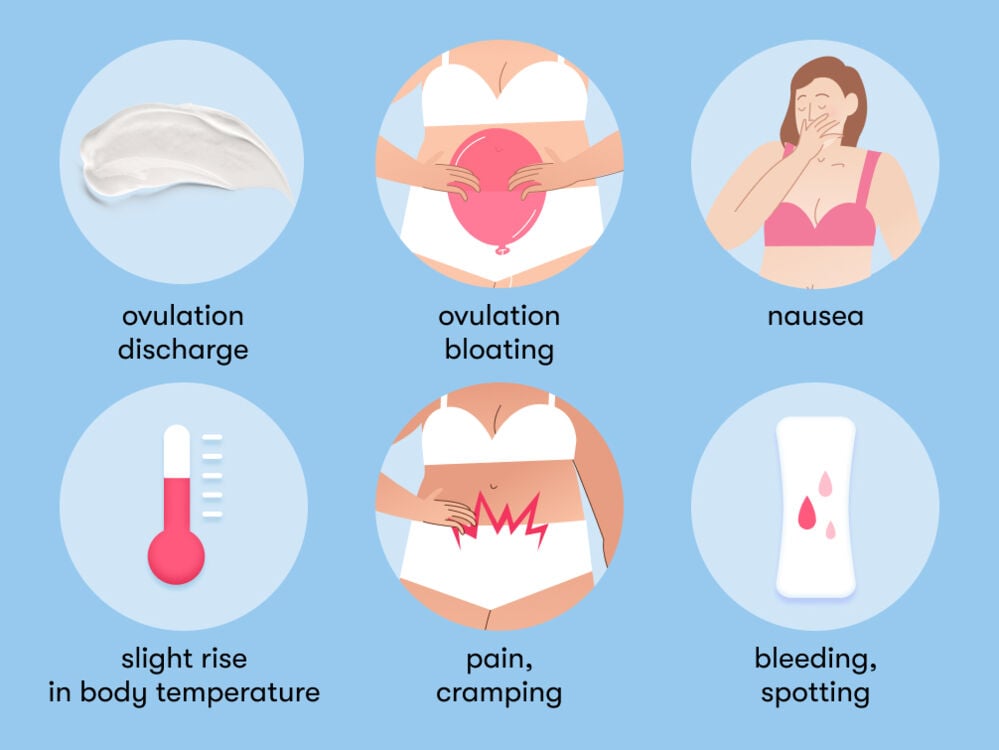
When is the best time to have sex when trying for a baby?
You might be wondering, how long does the ovulation peak last? “Usually, when people talk about the ovulation ‘peak,’ they’re talking about either the ‘peak’ of the LH surge or ‘peak fertility,’” explains Dr. Kallen. Generally, peak fertility — AKA the best time to have sex when trying for a baby — is the day you ovulate and the 24 hours after that, plus the five days before ovulation.
Why? Because sperm can hang out happily in your body for up to five days after having sex. So if they’re there in the days leading up to ovulation, they’re in with a chance of fertilizing your egg when it’s finally released. So, when are your highest chances of getting pregnant? When a fresh crowd of sperm reaches your fallopian tubes right at ovulation time.
When does ovulation end? Signs ovulation is ending
Ovulation ends once your ovary has released your egg. However, remember that the egg will then stay in place in your fallopian tube for around 12 to 24 hours. “Signs it’s ended include those ovulation symptoms resolving, so the bloating, nausea, and spotting [going away],” says Dr. Kallen. “You might also notice changes in your cervical mucus. Just after ovulation, there isn’t so much of it, and it becomes thicker and less noticeable.”
How can you track your ovulation?
Maybe you’re trying for a baby, or maybe you simply want a better understanding of your body and your health. Whatever your situation, it’s a good idea to track your ovulation.
If you’re aiming to get pregnant, then ovulation tests can be incredibly handy. They work by testing your urine for a surge in LH, which, as you now know, occurs around 36 hours before ovulation. This can help you figure out when you’re likely to be ovulating. Simply pee on the sticks in the days before you’re expecting to ovulate; once you see a positive result, you’ll know ovulation is soon expected to occur. It might also help to take the tests twice a day to ensure you don’t miss out on your chance of maximizing that peak.
Of course, you can also use a tool such as Flo’s ovulation calculator. Not everyone ovulates on day 14, so it’s smart to keep tabs on what your pattern tends to be. In fact, Flo’s 2020 study that we mentioned earlier found that only 13% of menstrual cycles saw ovulation on day 14.
And because it’s possible to get pregnant five days before ovulation, you can build up a picture of your fertile window over time, which means maximizing your baby-making chances in the process if that’s what you’re aiming to do.
How long does ovulation last? The takeaway
With each menstrual cycle, your ovulation time frame will be around 36 hours — but if you’re trying to conceive or want to avoid getting pregnant, then the days before ovulation are crucial, too. Your body may give you a few hints that it’s ovulation time (it’s helpful like that), so having an awareness of ovulation symptoms plus using Flo’s ovulation calculator can be handy ways to ramp up your chances when you’re trying to get pregnant — or simply for helping you to understand more about your own body and your health.
Note: Ovulation predictions should never be used for birth control


Hey, I'm Anique
I started using Flo app to track my period and ovulation because we wanted to have a baby.


The Flo app helped me learn about my body and spot ovulation signs during our conception journey.


I vividly
remember the day
that we switched
Flo into
Pregnancy Mode — it was
such a special
moment.
Real stories, real results
Learn how the Flo app became an amazing cheerleader for us on our conception journey.
References
Aba, Marcelo. “Anatomy and Physiology of Reproduction in the Female Llama and Alpaca.” Llama and Alpaca Care, edited by Christopher Cebra et al., Elsevier Inc., 2014, pp. 140–150, doi.org/10.1016/B978-1-4377-2352-6.00014-6. Accessed 2 Dec. 2022.
“Abnormal Uterine Bleeding.” The American College of Obstetricians and Gynecologists, www.acog.org/womens-health/faqs/abnormal-uterine-bleeding. Accessed 2 Dec. 2022.
“Basal Body Temperature for Natural Family Planning.” Mayo Clinic, 3 Mar. 2021, www.mayoclinic.org/tests-procedures/basal-body-temperature/about/pac-20393026.
“Bloating.” NHS, www.nhs.uk/conditions/bloating/. Accessed 23 Nov. 2022.
“Cervical Mucus.” Cleveland Clinic, my.clevelandclinic.org/health/body/21957-cervical-mucus. Accessed 23 Nov. 2022.
Dasharathy, Sonya S., et al. “Menstrual Bleeding Patterns among Regularly Menstruating Women.” American Journal of Epidemiology, vol. 175, no. 6, Mar. 2012, pp. 536–45.
“Feeling Sick (Nausea).” NHS, www.nhs.uk/conditions/feeling-sick-nausea/. Accessed 23 Nov. 2022.
“Fertility Awareness-Based Methods of Family Planning.” The American College of Obstetricians and Gynecologists, www.acog.org/womens-health/faqs/fertility-awareness-based-methods-of-family-planning. Accessed 23 Nov. 2022.
Grieger, Jessica A., and Robert J. Norman. “Menstrual Cycle Length and Patterns in a Global Cohort of Women Using a Mobile Phone App: Retrospective Cohort Study.” Journal of Medical Internet Research, vol. 22, no. 6, June 2020, p. e17109.
“How Can I Tell When I’m Ovulating?” NHS, www.nhs.uk/common-health-questions/womens-health/how-can-i-tell-when-i-am-ovulating/. Accessed 23 Nov. 2022.
“Menstrual Cycle: An Overview.” Johns Hopkins Medicine, 26 Dec. 2019, www.hopkinsmedicine.org/health/wellness-and-prevention/menstrual-cycle-an-overview.
“Ovulation.” Cleveland Clinic, my.clevelandclinic.org/health/articles/23439-ovulation. Accessed 23 Nov. 2022.
“Ovulation Pain.” NHS, www.nhs.uk/conditions/ovulation-pain/. Accessed 23 Nov. 2022.
“Ovulation Pain: Symptoms, Causes & Pain Relief.” Cleveland Clinic, my.clevelandclinic.org/health/diseases/9134-ovulation-pain-mittelschmerz. Accessed 23 Nov. 2022.
“Ovulation Signs: When Is Conception Most Likely?” Mayo Clinic, 7 Dec. 2021, www.mayoclinic.org/healthy-lifestyle/getting-pregnant/expert-answers/ovulation-signs/faq-20058000.
“Periods and Fertility in the Menstrual Cycle.” NHS, 2 Sep. 2022, www.nhs.uk/conditions/periods/fertility-in-the-menstrual-cycle/.
Van Stein, K. R., et al. “Ovulatory Shifts in Sexual Desire but Not Mate Preferences: An LH-Test-Confirmed, Longitudinal Study.” Evolutionary Psychology, vol. 17, no. 2, Apr.–June 2019.
History of updates
Current version (16 January 2023)
Published (17 January 2023)
In this article
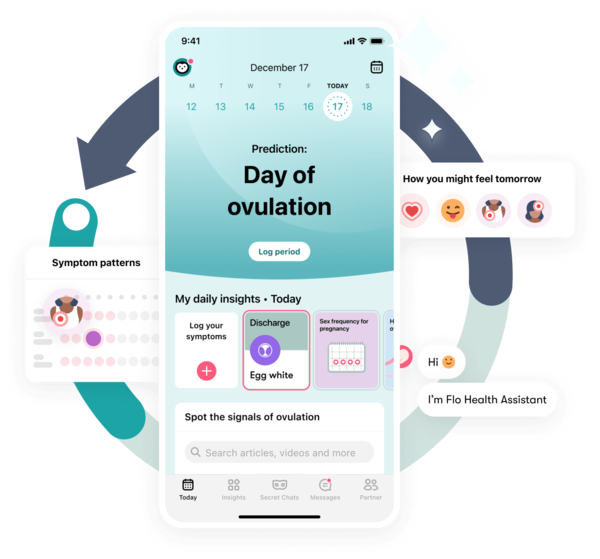
Get your personal guide to fertility
-
Learn how to read your body's ovulation signals
-
Find daily conception tips from our experts
-
Chat with others who are trying to get pregnant




